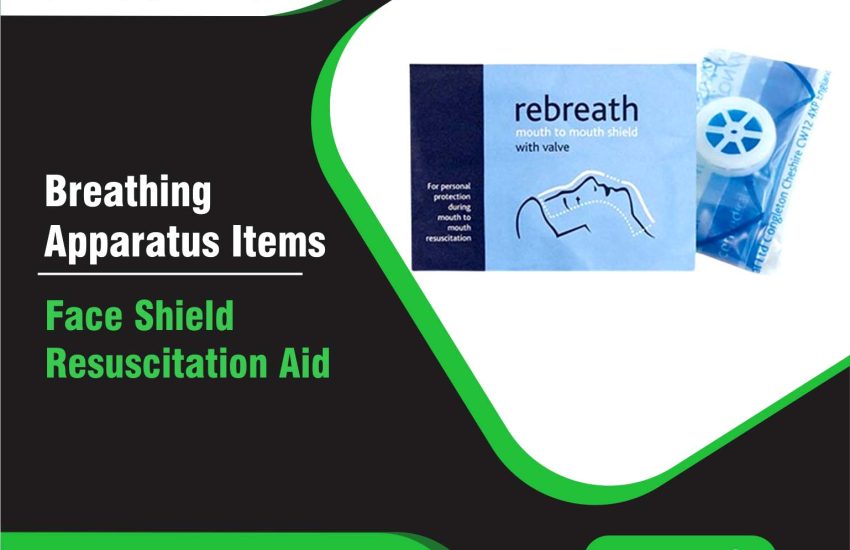Face Shield Resuscitation Aid is essential personal protective equipment (PPE) for cardiopulmonary resuscitation (CPR) and emergency medical procedures. It creates a barrier between the rescuer and the patient, protecting against bodily fluids like saliva, blood, and vomit. This device allows the rescuer to perform life-saving interventions safely, reducing the risk of cross-contamination. In this article, we discuss the key specifications, features, and benefits of the Face Shield Resuscitation Aid.
What is a Face Shield Resuscitation Aid?
A Face Shield Resuscitation Aid is a protective device used during CPR to cover the patient’s face. It allows the rescuer to perform mouth-to-mouth resuscitation safely. The shield provides a barrier to prevent exposure to bodily fluids, ensuring safety during emergency situations. It is commonly used by first responders, emergency medical technicians (EMTs), and healthcare workers.
Key Specifications of a Face Shield Resuscitation Aid
When selecting a Face Shield Resuscitation Aid, it’s important to consider the following specifications.
1. Material Composition
The Face Shield must be made from durable, high-quality materials. Common options include:
- Polyethylene (PE): Lightweight and strong, providing effective protection.
- Polycarbonate (PC): Impact-resistant, offering high durability.
- PVC (Polyvinyl Chloride): Flexible, resistant to chemicals, and ideal for frequent use.
2. Size and Fit
The shield should fit comfortably over the mouth and nose without obstructing the rescuer’s breathing. Different sizes accommodate various facial structures, ensuring a secure fit during use.
3. One-Way Valve Mechanism
Many Face Shield Resuscitation Aids feature a one-way valve. This valve allows air to flow from the rescuer to the patient, preventing backflow of air and fluids. It ensures safety and reduces the risk of cross-contamination.
4. Disposable vs. Reusable
- Disposable shields are ideal for single-use situations. They ensure hygiene and reduce infection risk.
- Reusable shields are made of durable materials that can be cleaned and disinfected for long-term use.
5. Compatibility with Other Equipment
The Face Shield Resuscitation Aid should work with other CPR tools, such as rescue masks or bag-valve masks (BVM). This ensures easy integration into a complete CPR kit.
6. Portability and Storage
The Face Shield Resuscitation Aid should be lightweight and easy to store in emergency kits. Most disposable shields are compact and come in individually sealed packages for convenience.
7. Certification and Compliance
Look for shields that meet safety standards, like FDA certification or CE marking. These ensure the product is effective and safe for use in healthcare settings.
Features and Benefits of a Face Shield Resuscitation Aid
1. Infection Control
The shield is designed to protect the rescuer from potential infectious diseases like COVID-19, hepatitis, and tuberculosis. It prevents exposure to bodily fluids during CPR, ensuring safer resuscitation.
2. Ease of Use
The shield is simple to use, even for those with no medical training. Its clear instructions make it ideal for bystanders or first responders who need to act quickly.
3. Minimal Discomfort
Compared to other CPR protection devices, the Face Shield is non-invasive and comfortable for both the rescuer and the patient. It ensures ease of use during resuscitation efforts.
4. Improved Safety for Bystanders
The shield encourages bystanders to assist in emergencies. It provides peace of mind, knowing there is protection from germs and viruses during CPR.
5. Compact and Portable
The shield is lightweight and easy to carry. Its compact design ensures it fits neatly into first aid kits or medical bags, ready for emergency use.
Applications of a Face Shield Resuscitation Aid
- Emergency Medical Services (EMS): Face Shield Resuscitation Aids are vital in ambulances, fire trucks, and rescue vehicles, ensuring safe CPR during emergencies.
- Healthcare Providers: Medical professionals use these shields in hospitals and clinics to safely perform CPR in high-risk environments.
- Public and Workplace Safety: By keeping Face Shield Resuscitation Aids in public spaces and workplaces, businesses can ensure that safety measures are in place for emergency situations.
- Training and Education: Many CPR training programs use face shields to demonstrate proper techniques while protecting both trainers and trainees.
Conclusion
A Face Shield is a critical piece of personal protective equipment during CPR and emergency medical procedures. With features like durable material, one-way valve, and compatibility with other CPR tools, it offers key benefits such as infection control, ease of use, and protection for bystanders. Whether in medical environments, public spaces, or workplaces, the availability of a Face Shield ensures that CPR can be performed safely and effectively, potentially saving lives in emergencies.


